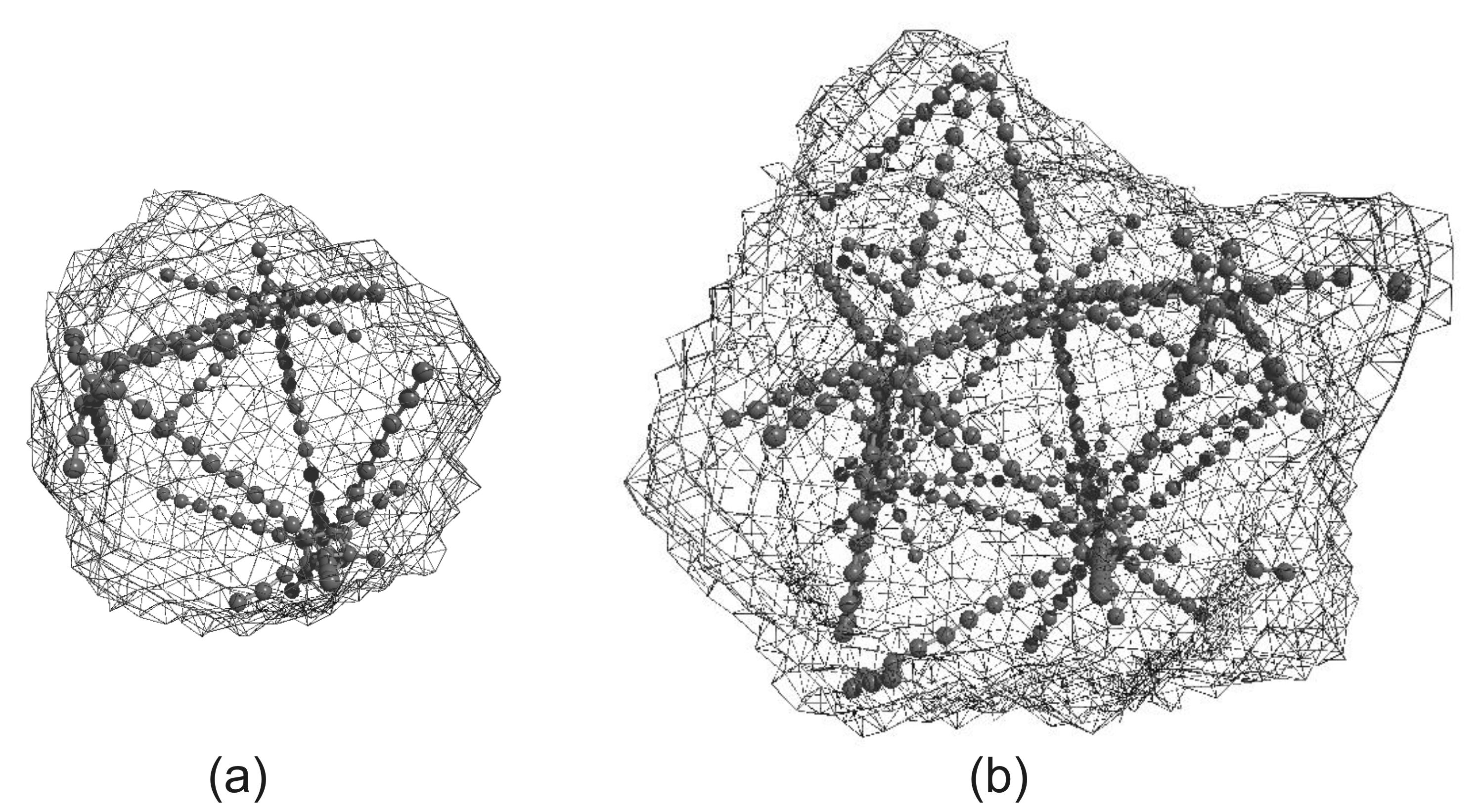| Search for content and authors |
Formation of regular polyicosahedral and defected crystalline structures in growing Lennard-Jones clusters |
| Wiesław Polak |
|
Lublin University of Technology, Department of Applied Physics (LUT), Nadbystrzycka 38, Lublin 20-618, Poland |
| Abstract |
| Formation of solid structure and its subsequent enlargement have been the main problems to be solved in simulated nucleus/cluster growth from vapour using the two-temperature-region cluster growth model [1]. Simulations were done for unsupported heavy rare-gas (Ar, Ne, Kr, Xe) clusters using Lennard-Jones (LJ) interaction potential. Four series of the Monte Carlo simulations, carried out for constant temperature T* = 0.25, 0.30, 0.35 and 0.40 in reduced units (T = 30.3 K, 36.3 K, 42.4 K and 48.4 K for argon, respectively), were started from LJ13 icosahedral cluster used as a seed in a supersaturated LJ vapour. Evolution of cluster structure during growth was examined using structural analysis based on the Coordination Polyhedron method [2] accompanied with visualisation of the cluster structure, if necessary. In the first simulation stage, growth was stopped when clusters achieved the final size N = 900-1000 atoms. In this way, every simulation series produces over 100 final clusters as well as much more clusters of intermediate size during growth. The structural analysis revealed that the clusters at all analysed temperatures are initially liquid and then transform to solid ones. The solidification is caused solely by a growing number of cluster atoms and occurs in the range from 160 to 900 atoms. Irregular non-crystalline structures prevail in the coldest final clusters, but many hotter clusters show regular non-crystalline or regular crystalline structure; regular structure is observed in 10%, 29%, 41% and 58% of cluster population for T* = 0.25, 0.30, 0.35 and 0.40, respectively. Regular non-crystalline structures, mainly in the form of regular polyicosahedral (r-PIC) and rarely as defected decahedral (d-Dh) structure, are formed, respectively, in 9%, 25%, 27% and 44% of clusters, while regular crystalline structure in 1%, 4%, 14% and 15%. Regular crystalline clusters are classified as layered (L) ones with a few sandwiched parallel fcc and hcp close-packed layers and as defected layered (dL) or tetrahedral fcc core (t-FCC) clusters. This occurs as a result of kinetic trapping of nonparallel hcp surface planes on curved fcc cluster surface. All mentioned types of cluster structure were found recently in LJ clusters solidified during simulated cooling [3]. In order to analyse the growth of solid cluster structure, in the second simulation stage practically all the obtained clusters were grown until N = 3300 was reached. Finally, in the third stage many selected clusters characterised by the regular internal structure of the types: r-PIC, d-Dh, L, dL or t-FCC were grown in simulations from N = 3300 up to N = 10 000 in the final clusters. Structural analysis revealed that the layered structure maintains layered fcc-hcp character by the addition of new atoms at the end of existing layers, keeping flat interface and its width constant during growth along the layers. The cluster growth in the perpendicular direction occurs by formation of new dense-packed layers by island formation mechanism. The r-PIC structure, characterised by regularly located icosahedral units, fcc tetrahedral regions and linear chains of decahedral units forming edges of regular tetrahedrons (see Fig. 1), initially keeps the structure during the growth, but its subsequent growth leads to the formation of disordered regions. The same occurs finally with d-Dh and t-FCC clusters, since they all evolve to r-PIC clusters during growth forming the long decahedral chains. The disturbed growth of r-PIC clusters is explained by structural misfit of tetrahedral fcc regions leading to internal tensions and formation of defects in growing clusters. 
Fig. 1. Formation of regular structure of decahedral chains during growth of r-PIC cluster from: (a) N = 3300 to (b) N = 10000 atoms. [1] W. Polak, Phys. Rev. B 71 (2005) 235413. [2] W. Polak, A. Patrykiejew, Phys. Rev. B 67 (2003) [3] W. Polak, Phys. Rev. E 77 (2008) 031404. |
| Legal notice |
|
| Related papers |
Presentation: Oral at 17th International Conference on Crystal Growth and Epitaxy - ICCGE-17, General Session 1, by Wiesław PolakSee On-line Journal of 17th International Conference on Crystal Growth and Epitaxy - ICCGE-17 Submitted: 2013-04-15 23:31 Revised: 2013-07-26 16:15 |